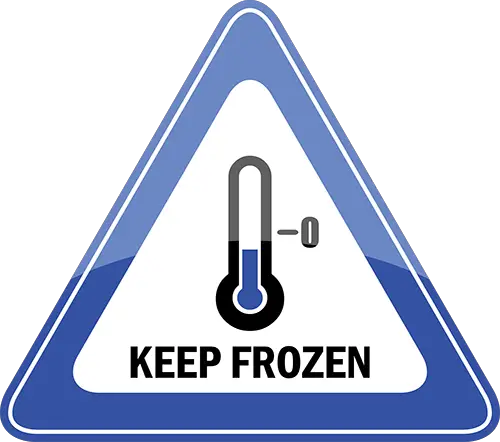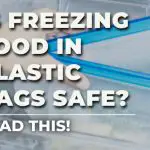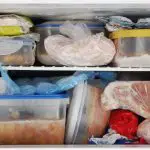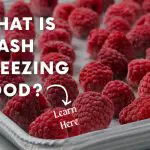Avoid These Common Freezing Blunders: What Pros Do Differently to Preserve Food Quality and Taste
Freezing food can save time and money, but many of us make simple mistakes that ruin our frozen goods. From freezer burn to mysterious packages of “what was this again?”, these errors can waste food and leave you frustrated.
Professional chefs and food safety experts know that proper freezing techniques preserve flavor, texture, and nutritional value of your food.
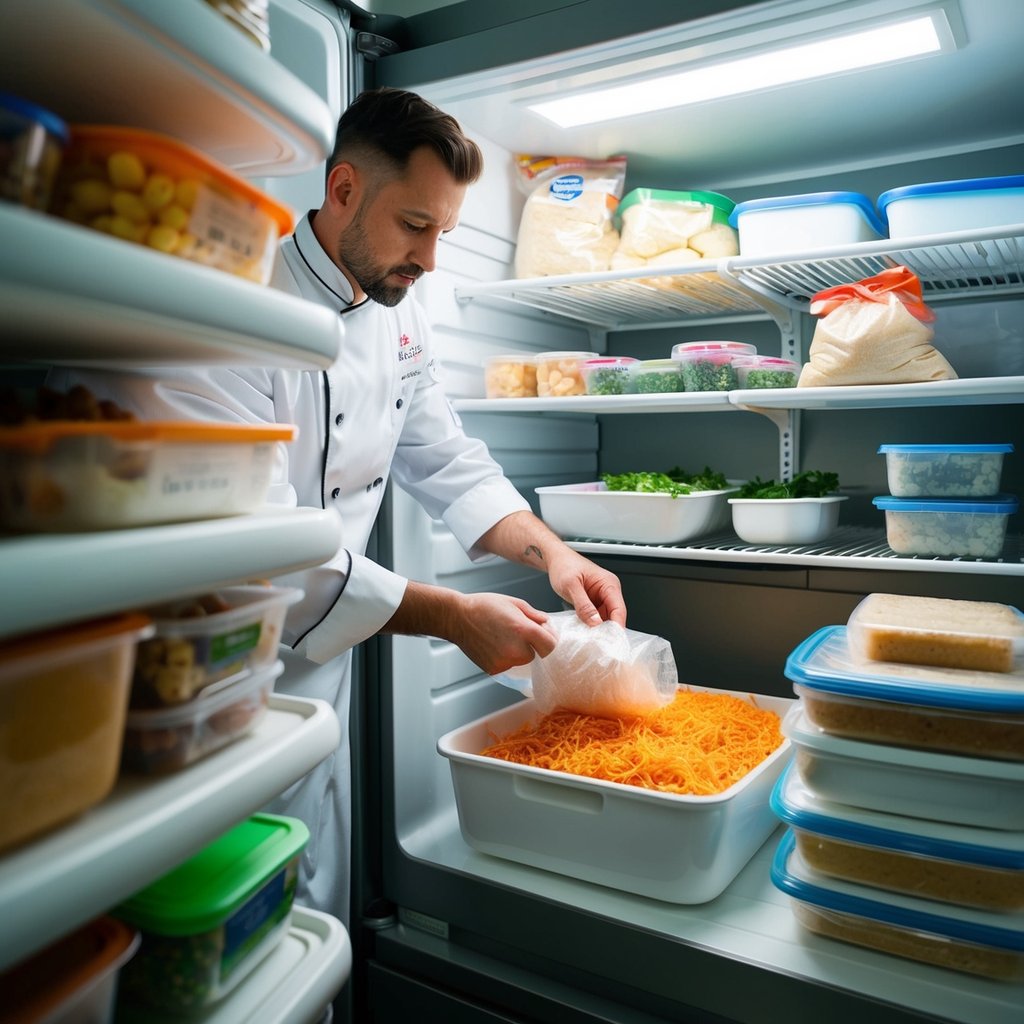
Have you ever pulled something from your freezer only to find it covered in ice crystals or tasting “off”? You’re not alone.
Many common freezing blunders happen because we don’t understand how our freezers work or the best ways to prepare food for freezing.
Key Takeaways
- Properly wrapping and sealing food prevents freezer burn and preserves quality for months longer.
- Maintaining your freezer at 0°F (-18°C) ensures food safety and extends storage life.
- Organizing and labeling frozen items saves time and reduces waste from forgotten food.
Getting to Know Your Freezer

Your freezer is more than just a cold box. Understanding how it works helps you avoid common mistakes and keep your food fresher, longer.
Understanding Freezer Temperature
The ideal freezer temperature is 0°F (-18°C) or below. At this temperature, food freezes solid and bacteria growth stops completely.
Many freezers come with built-in thermometers, but it’s smart to keep a separate one inside to double-check.
When your freezer isn’t cold enough, food quality suffers. Ice cream becomes soft and develops ice crystals. Meat may partially thaw and refreeze, causing texture changes.
If your temperature fluctuates often, check your door seals. They might be worn out or dirty. A simple cleaning with warm, soapy water can fix this problem.
Remember that opening the door frequently raises the temperature. Try to be quick when grabbing items, and organize your freezer so you can find things fast.
The Science of Freezing and Thawing
Freezing works by turning water in food into ice crystals. These crystals stop bacteria from growing and slow down enzymes that cause food to spoil.
Fast freezing creates smaller ice crystals, which do less damage to food cells. That’s why commercially frozen foods often have better texture than home-frozen ones.
When you thaw food, do it safely in the refrigerator. This slow method prevents bacteria growth.
For quicker thawing, use cold water or the microwave, but cook the food right away.
Never thaw at room temperature! The outer layers reach the “danger zone” (40°F-140°F) while the center remains frozen, allowing bacteria to multiply rapidly.
Some foods, like berries and bread, can be used while still frozen. Others, like meats, need complete thawing for even cooking.
The Role of Air Circulation in Freezing
Good air circulation is crucial for efficient freezing. When you pack items too tightly, cold air can’t move between them. This creates warm spots and uneven freezing.
Leave some space between newly added warm foods and already frozen items. This prevents partial thawing of frozen foods and helps the new items freeze faster.
Consider how you arrange your freezer:
- Keep similar items together
- Don’t block air vents
- Use square containers to maximize space without overcrowding
Freezer burn happens when air directly contacts food surfaces. It’s not harmful but affects taste and texture. To prevent it, wrap foods tightly in freezer-safe materials or use vacuum sealers.
Using proper containers helps maintain air circulation while protecting your food. Glass, heavy-duty plastic, and freezer bags designed for cold temperatures work best.
Preventing Freezer Faux Pas
Smart freezing practices make all the difference between food that tastes fresh and food that ends up in the trash. Your freezer can be your best friend in the kitchen when you know how to use it properly.
Avoiding Freezer Burn
Freezer burn happens when air reaches your food, causing those dry, discolored patches that ruin taste and texture. To fight this common problem, wrap foods tightly with freezer-specific materials.
Regular plastic wrap isn’t enough! Use freezer paper, heavy-duty aluminum foil, or freezer bags designed to keep air out. Push out as much air as possible before sealing.
Pro tip: Label everything with contents and date. Foods like meat and fish are especially prone to freezer burn, so consider double-wrapping them.
For meal prep enthusiasts, portion your foods before freezing. This reduces the need to refreeze and limits exposure to air.
Vacuum sealers are worth the investment if you freeze food regularly. They remove nearly all air and can extend freezer life by months!
Why You Should Avoid Frost Build-Up
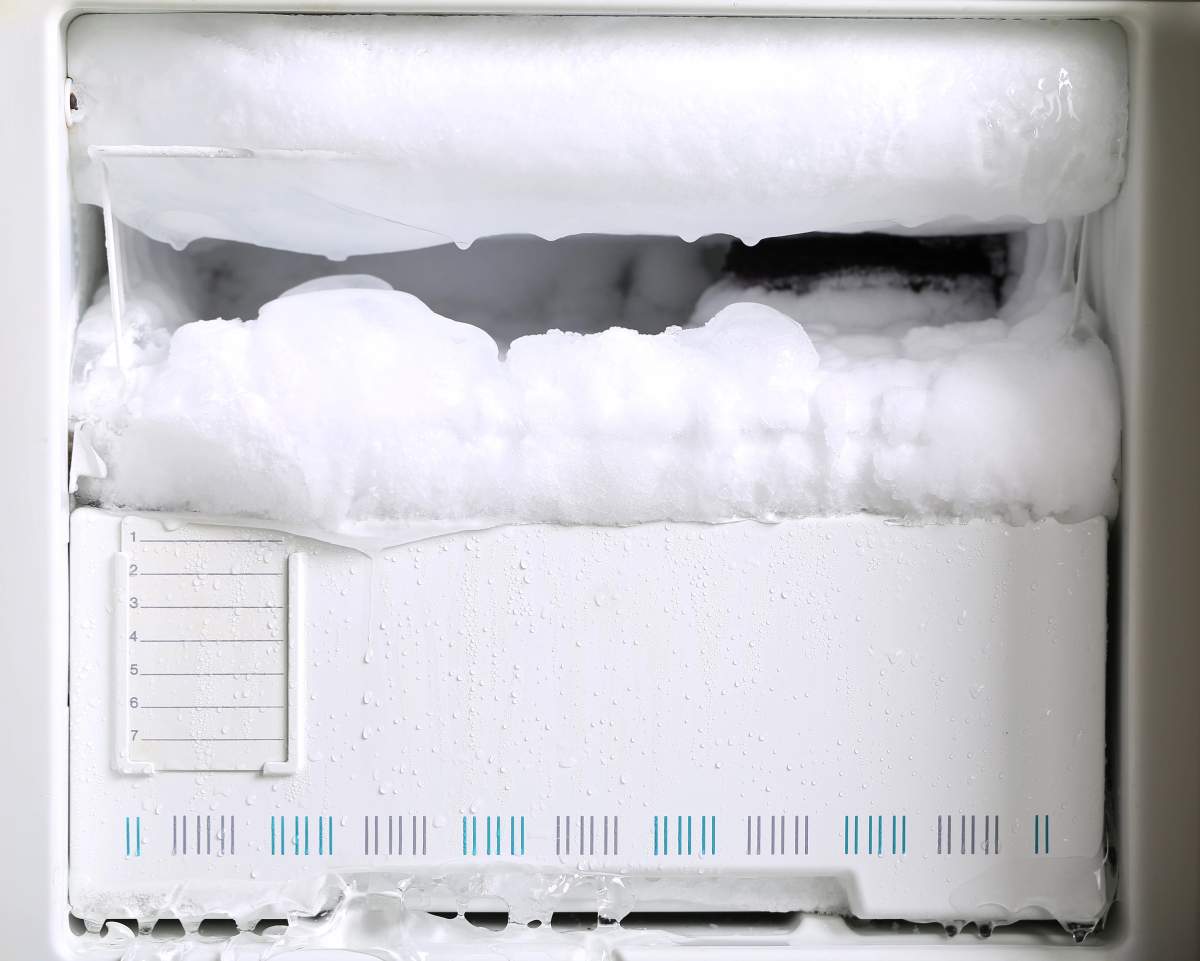
That layer of ice coating your freezer walls isn’t just annoying—it’s costing you money and affecting your food quality. Frost build-up makes your freezer work harder, using more electricity and shortening its lifespan.
The ideal freezer temperature is 0°F (-18°C). Check it monthly with a freezer thermometer to ensure it stays consistent.
Don’t overpack! Air needs to circulate around foods to maintain even temperatures. Leave some space between items.
Quick fixes for frost:
- Defrost your freezer every 6-12 months
- Keep the door closed as much as possible
- Check door seals for cracks or tears
When frost exceeds ¼ inch thickness, it’s definitely time to defrost. Modern frost-free freezers help, but they still need regular cleaning to work efficiently.
The Cost of Improper Freezing: Foodborne Illness
Improper freezing won’t kill harmful bacteria—it just puts them into hibernation. They wake up ready to multiply when food thaws incorrectly.
Never thaw food on the counter! Bacteria grow rapidly at room temperature. Instead, thaw in the refrigerator, cold water (changing water every 30 minutes), or microwave if cooking immediately.
Foods left in the “danger zone” (40°F to 140°F) for over two hours can cause food poisoning. Symptoms like nausea, vomiting, and fever might not show up for days.
Safety checklist:
- Cool hot foods before freezing
- Divide large portions into smaller containers
- Use frozen foods within recommended timeframes
- Reheat frozen foods to 165°F
Remember: when in doubt, throw it out! No food savings are worth risking your health with potentially contaminated frozen items.
Best Practices in Freezing
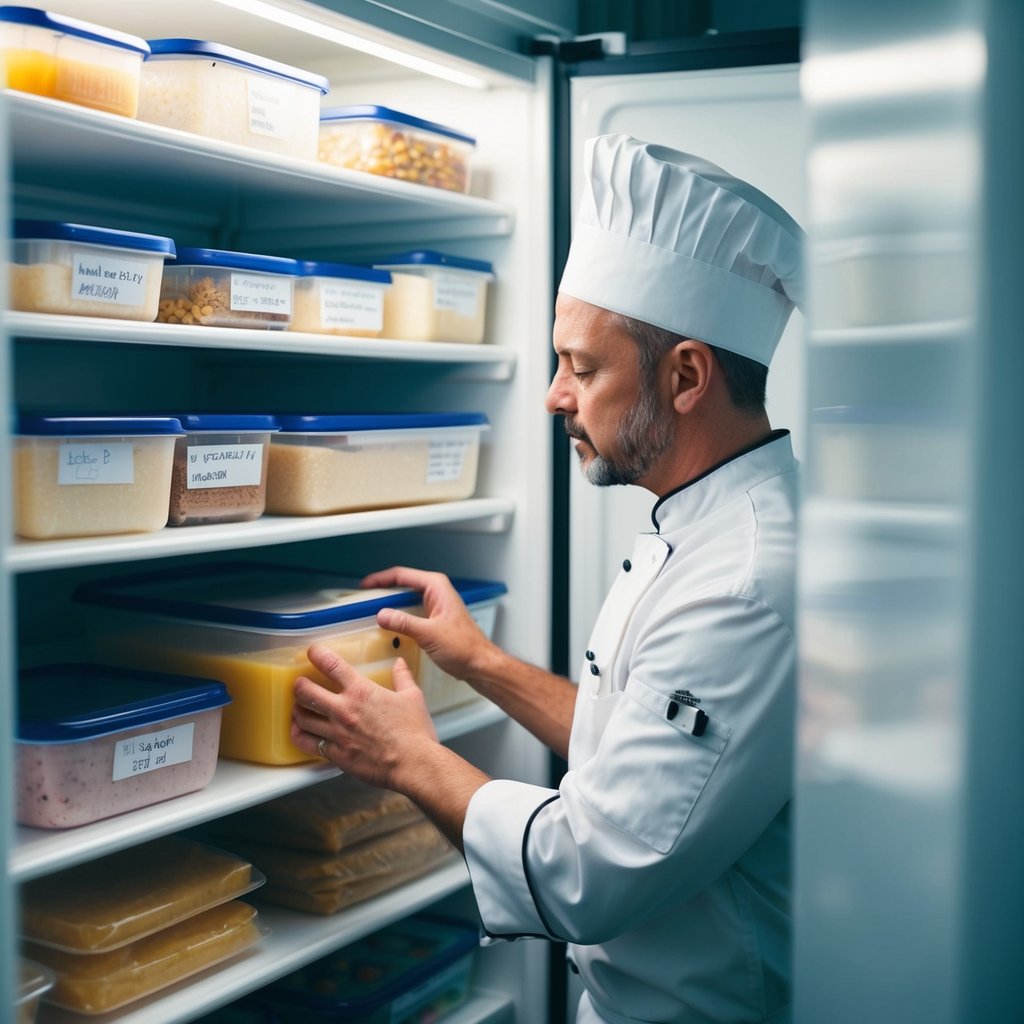
Freezing food properly helps maintain quality and prevent waste. The right tools and techniques make all the difference in preserving flavor and texture while making your freezer more efficient.
How to Label and Organize Like a Pro
Never trust your memory when it comes to frozen food. Label everything with the contents and date. Use waterproof markers or freezer labels that won’t smudge or fall off in cold temperatures.
Create a simple inventory system. Keep a list on your phone or on the freezer door of what’s inside. This prevents forgotten food from getting buried.
Group similar items together. Use bins or stackable containers to separate meats, vegetables, and prepared meals. This makes finding things easier.
Adopt the “first in, first out” rule. Place newer items in the back so you use older foods first. This reduces waste and prevents freezer burn on forgotten items.
Consider color-coding your labels for different food types or family members’ meals. This visual system makes grabbing the right item quick and easy.
Choosing the Right Containers for Your Food
Airtight containers are essential for freezing success. They prevent freezer burn and keep flavors from transferring between foods.
Glass containers work well for soups and sauces. They don’t absorb odors or stains but remember to leave expansion space for liquids.
Plastic freezer bags are perfect for meats and vegetables. Press out all the air before sealing to prevent freezer burn. Lay them flat to freeze for easy stacking.
Heavy-duty aluminum foil can be used for wrapping. Double-wrap items for extra protection from air exposure.
Avoid regular plastic containers not designed for freezing. They can crack in extreme cold and don’t seal well enough to keep air out.
Portion your food before freezing. This allows you to thaw only what you need rather than the entire batch.
Maximizing Freezer Efficiency with Individually Quick-Freeze Method
The Individually Quick-Freeze (IQF) method preserves quality and prevents clumping.
Spread berries, diced vegetables, or portions on a baking sheet so they don’t touch.
Place the sheet in the freezer until items are solid (about 2-4 hours). Once frozen, transfer to airtight bags or containers. This prevents one big frozen lump.
IQF works great for:
- Berries and fruit pieces
- Diced vegetables
- Meatballs and portions
- Cookies and baked goods
When Freezing Goes Wrong
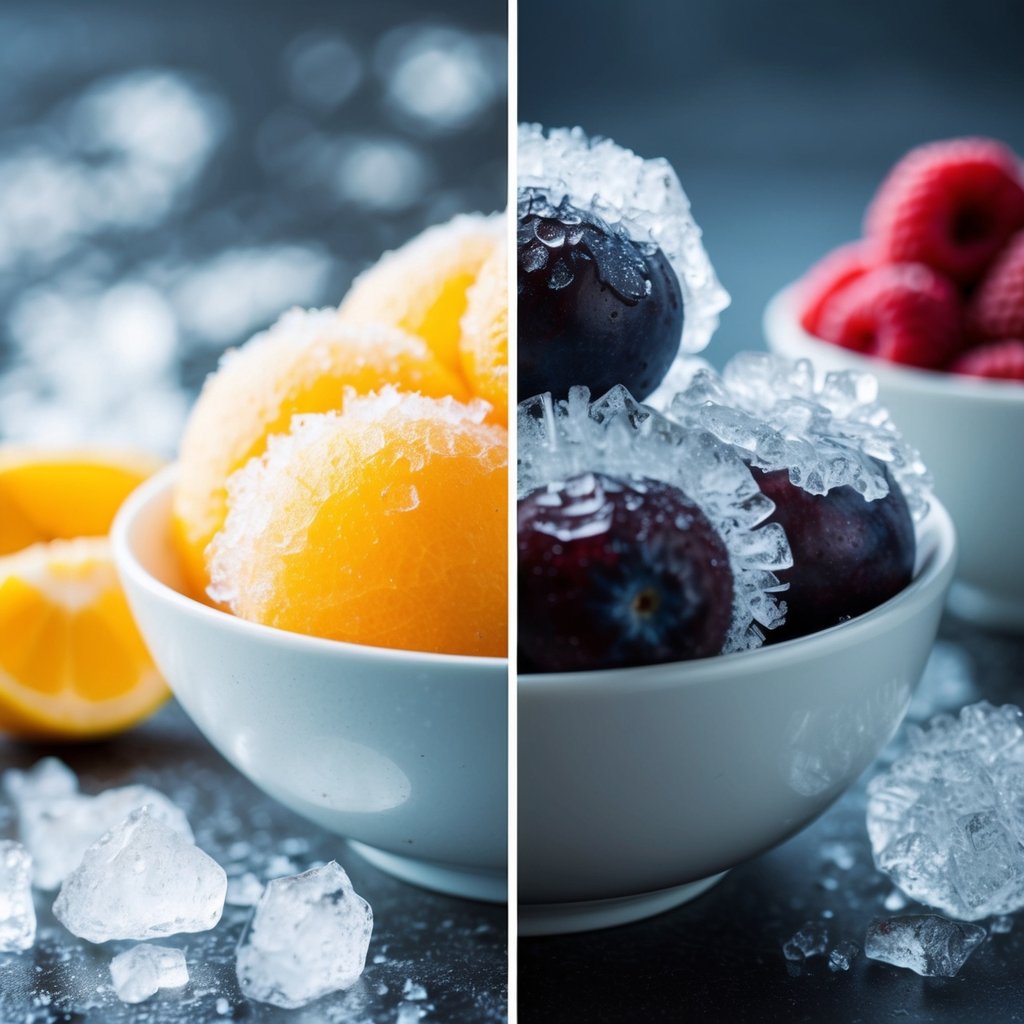
Even with the best intentions, freezing food can sometimes lead to disappointing results. From unexpected power outages to simple mistakes in food preparation, knowing how to handle freezing mishaps can save you money and prevent food waste.
Handling a Power Outage
Power outages can quickly turn your freezer from a food preservation tool into a ticking clock of potential waste.
When the electricity goes out, keep your freezer door closed as much as possible. A full freezer will typically maintain safe temperatures for about 48 hours, while a half-full freezer manages about 24 hours.
Consider investing in a freezer thermometer to monitor temperatures during outages.
Once power returns, check each item individually.
Remember this rule: if an item still contains ice crystals, it’s usually safe to refreeze.
For items that have completely thawed but still feel refrigerator-cold, cook them immediately.
Don’t risk refreezing thawed raw meat, poultry, or seafood unless it’s been kept at safe temperatures.
Quick tip: Keep frozen water bottles or ice packs in your freezer.
They help maintain cold temperatures longer during outages and can be used as emergency drinking water if needed.
Common Mistakes That Lead to Food Waste
Improper packaging is one of the biggest freezer blunders.
When you use thin plastic bags or containers that aren’t airtight, you invite freezer burn and flavor transfer between foods.
Overfilling your freezer prevents proper air circulation, resulting in uneven freezing and potential spoilage.
On the flip side, an empty freezer wastes energy and makes temperature maintenance harder during power outages.
Not labeling and dating frozen items often leads to mysterious “freezer discoveries” months later.
Was that chicken frozen last week or last year? When in doubt, most people throw it out.
Another common mistake is freezing food that’s already past its prime.
The freezer preserves quality; it doesn’t improve it. If food isn’t fresh when frozen, it won’t be fresh when thawed.
Foods most commonly wasted due to freezing mistakes:
- Vegetables (not blanched before freezing)
- Leftovers (poorly packaged or forgotten)
- Bread (frozen without proper wrapping)
The Misuse of Freezing: What Not to Do
Not all foods respond well to freezing. High-water-content produce like lettuce, cucumbers, and watermelon turn mushy and unappetizing after freezing and thawing.
Similarly, dairy products like yogurt and cream-based sauces often separate and develop grainy textures.
Defrosting food improperly is another major mistake.
Never defrost meat or poultry on the counter at room temperature. This creates a perfect environment for harmful bacteria to multiply.
Instead, thaw food in the refrigerator, cold water (changed every 30 minutes), or using your microwave’s defrost setting.
Repeatedly freezing and thawing food degrades quality and can create food safety issues.
Each freeze-thaw cycle causes more cell damage and moisture loss. This is why pros portion larger packages of meat into meal-sized portions before freezing.
Don’t forget to regularly maintain your freezer by defrosting (if not frost-free) and cleaning it.
Food spills can harbor bacteria and affect the efficiency of your appliance.
Seal the Deal: Tools of the Trade
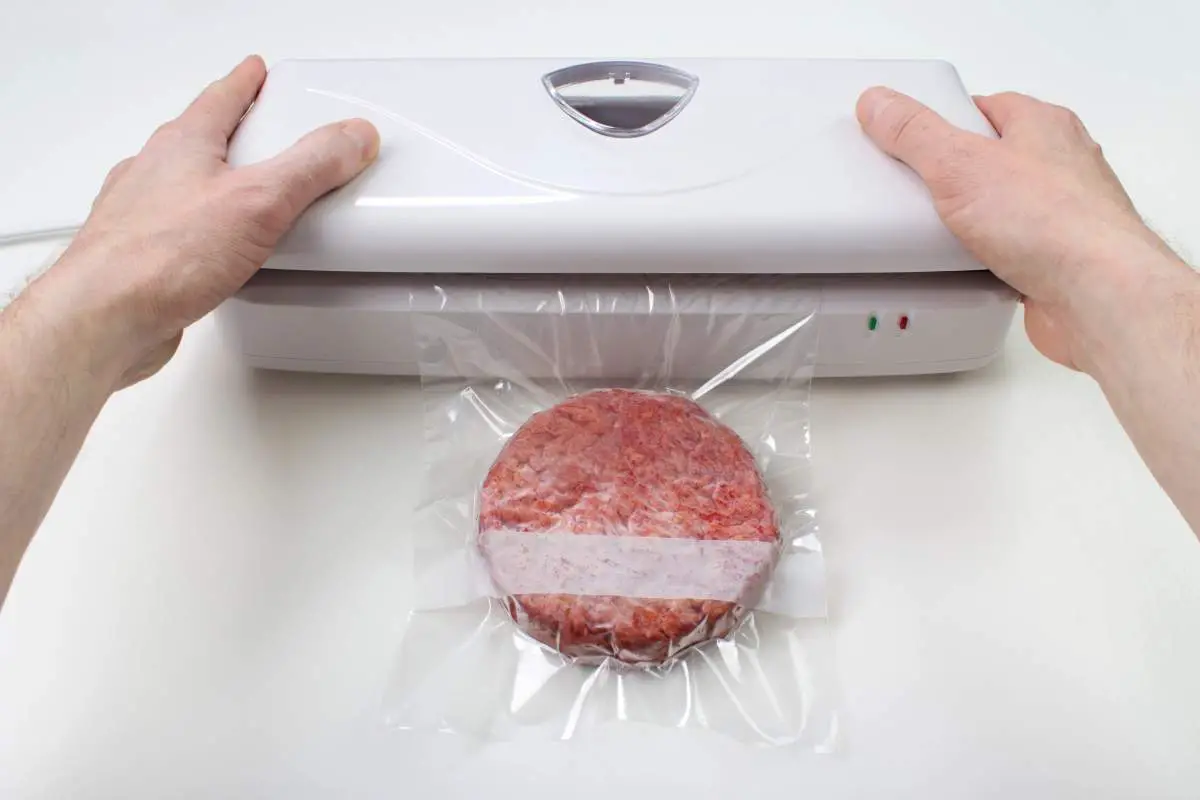
Proper sealing techniques and tools make all the difference between freezer-burned disappointments and perfectly preserved foods. The right equipment helps lock in freshness and protect your frozen goods from the harsh freezer environment.
The Magic of Vacuum Sealers
Vacuum sealers are game-changers for serious food preservation.
These devices remove air from storage bags and create an airtight seal that dramatically extends freezer life.
A good vacuum sealer helps prevent freezer burn by eliminating the air that causes those unwanted ice crystals to form on your food.
Most models are surprisingly easy to use – just place food in the special bags, position the open end in the sealer, and press a button.
You’ll find options ranging from basic handheld models ($20-$40) to more advanced countertop versions ($60-$200).
(The Nesco Deluxe Food Vacuum Sealer on Amazon is a good all-around model that won’t break the bank.)
The investment pays off quickly when you stop throwing away freezer-burned food.
Pro tip: Pre-freeze soft or liquid foods before vacuum sealing to prevent them from being crushed during the sealing process.
Sticking It Together with Freezer Tape
Don’t underestimate the humble freezer tape (Amazon)!
Unlike regular tape that becomes brittle and falls off in cold temperatures, freezer tape maintains its adhesive properties in sub-zero conditions.
Freezer tape creates reliable seals on foil, plastic wrap, and freezer paper.
It’s also perfect for labeling packages with contents and dates – essential information you’ll appreciate months later.
Look for moisture-resistant, low-residue tape that won’t leave sticky gunk when removed.
The paper-based varieties accept writing with regular pens or markers without smudging.
Keep a roll in your kitchen drawer for quick package seals when you’re in a hurry. At $3-$5 per roll, it’s an affordable way to ensure your careful freezing efforts don’t go to waste.
Frequently Asked Questions
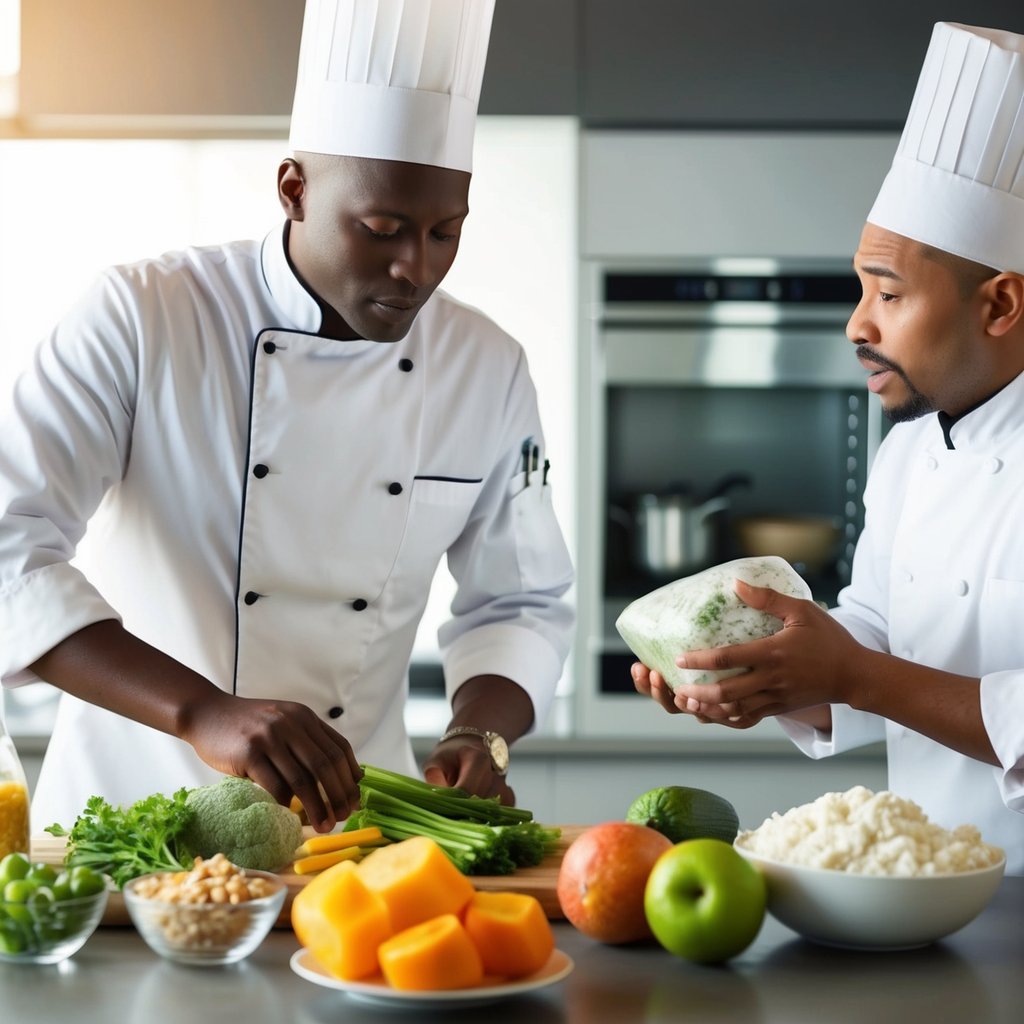
What are the top mistakes people make when trying to freeze food at home?
Overloading your freezer is a major mistake.
When you add too much unfrozen food at once, it raises the temperature and slows down freezing time for everything.
Not labeling containers is another common error.
Without dates and contents written clearly, you’ll end up with mystery packages that get forgotten.
Poor wrapping leads to freezer burn. Many people use regular plastic wrap that isn’t designed for freezer use, allowing air to reach the food.
Freezing food that’s still hot can create ice crystals and affect quality. Always cool food to room temperature before freezing it.
Can you share some insider tips on how to properly freeze fresh produce?
Blanch vegetables before freezing.
This quick boil followed by an ice bath stops enzyme activity that causes deterioration and preserves color, flavor, and nutrients.
Freeze berries and fruit pieces on a baking sheet first.
Once frozen, transfer them to containers so they don’t stick together in one large clump.
Use the freshest produce possible. Freezing doesn’t improve quality – it only maintains what’s already there.
Remove as much air as possible from packaging. Air is the enemy of frozen foods and leads to deterioration over time.
Why does my food get freezer burn, and how can I prevent it?
Freezer burn happens when moisture evaporates from food due to improper wrapping.
The dehydrated areas turn white or gray and develop a tough texture.
Use freezer-specific wrapping materials. Regular plastic wrap and containers aren’t designed to keep air out at freezing temperatures.
Double-wrap items that will be stored longer than a month. Use plastic wrap first, then aluminum foil or freezer paper.
Squeeze out as much air as possible before sealing.
For bags, you can use a straw to suck out excess air before quickly sealing.
Is there a right way to defrost food to maintain its quality and safety?
The refrigerator is the safest defrosting method.
Plan ahead and allow 24 hours for every 5 pounds of large items like meat.
Never defrost food at room temperature. This allows bacteria to multiply rapidly on the thawed portions while the center remains frozen.
Cold water thawing works for faster results.
Place sealed food in cold water, changing the water every 30 minutes.
Some foods can be cooked from frozen.
Vegetables, pre-cooked meals, and some meats don’t require thawing before cooking.
What containers should I be using to freeze my food like a pro?
Freezer-grade containers with airtight seals work best.
They’re designed to withstand temperature changes without cracking.
Glass containers with straight sides and wide mouths are excellent choices. Leave 1 inch of headspace for expansion when freezing liquids.
Vacuum-sealed bags remove air completely. This method gives you the longest freezer life and best quality for meats and other items.
Aluminum foil can supplement other wrappings.
It provides an extra barrier against air and helps prevent freezer burn.
How long can I really keep food in the freezer before it loses its taste or becomes unsafe?
Safety isn’t usually compromised in frozen foods. Properly frozen foods remain safe indefinitely, but quality decreases over time.
Ground meats stay at peak quality for 3-4 months. Whole cuts like steaks and roasts maintain quality for 6-12 months.
Fruits and vegetables generally last 8-12 months. After this time, they’re still safe but may develop off-flavors or textures.
Cooked leftovers are best used within 2-3 months. Beyond that, they often develop a stale, “freezer taste” even when properly wrapped.
